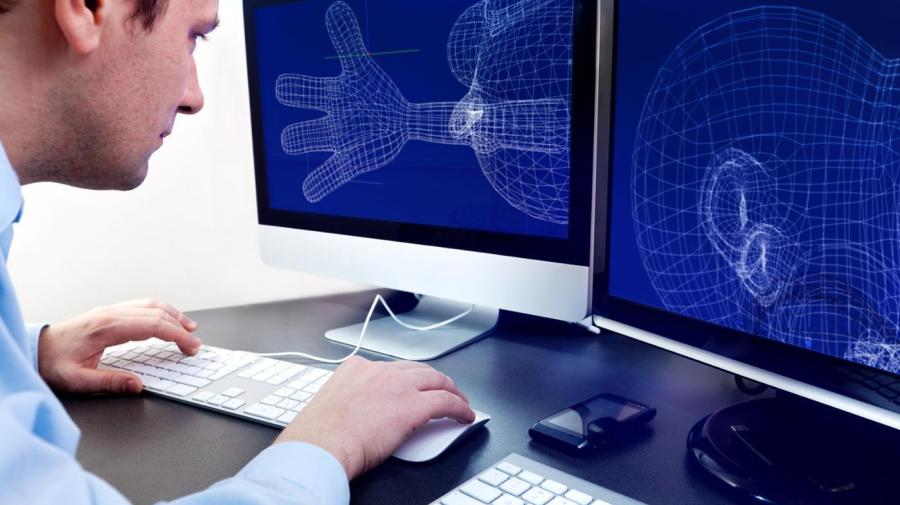What Is the Difference Between 2D and 3D Design?

The difference between 2-D and 3-D design is that 2-D is flat and has only two dimensions, while a 3-D design allows for depth and rotation. In general, these terms define the difference between a painting and a sculpture. Most of these shape designs are used in geometry.
2-D design involves purposeful decision-making about using the elements and principles of drawing in an integrative manner. In 2-D design, understanding of design principles is demonstrated as applied to a two-dimensional surface. These designs articulate the principles of design, such as unity/variety, balance, emphasis, contrast, rhythm, repetition, proportion/scale and figure/ground relationship, through a range of visual elements, including line, shape, color, value, texture and space.
3-D design addresses engagement with physical space and materials. In 3-D design, the designer demonstrates understanding of design principles that relate to depth and space and articulates the same principles of design utilized in 2-D design (unity, balance, etc.) with visual elements such as mass, volume, color/light, form, plane, line and texture. These issues are explored through additive, subtractive and/or fabrication processes. Examples of 3-D design approaches include, but are not limited to, figurative or non-figurative sculpture, architectural models, metal work, ceramics, 3-D fiber arts/fashion and jewelry or other forms of body adornment.





